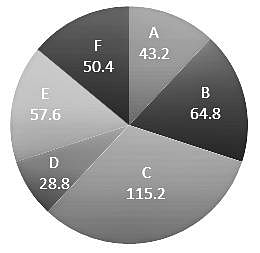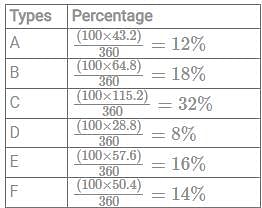TS SET Paper 1 Mock Test - 10 - TS TET MCQ
30 Questions MCQ Test TS SET Mock Test Series 2024 - TS SET Paper 1 Mock Test - 10
Given below are two statements:
Statement I: The localities along the major rivers of the country are worst affected by Arsenic contamination.
Statement II: The major cause of arsenic contamination is the use of groundwater above the permissible level.
In the light of the above statements, choose the most appropriate answer from the options given below:
Statement I: The localities along the major rivers of the country are worst affected by Arsenic contamination.
Statement II: The major cause of arsenic contamination is the use of groundwater above the permissible level.
In the light of the above statements, choose the most appropriate answer from the options given below:
Directions: Given below are two statements, one labelled as Assertion A and the other labelled as Reason R.
Assertion A: Areas near the equator receive rainfall throughout the year.
Reason R: High temperatures and high humidity cause convectional rain in most areas near the equator.
In context of the above two statements, which of the following is correct?
Assertion A: Areas near the equator receive rainfall throughout the year.
Reason R: High temperatures and high humidity cause convectional rain in most areas near the equator.
In context of the above two statements, which of the following is correct?
Transforming thoughts, ideas and messages into verbal and non-verbal signs is referred to as
Which of these should be avoided for an effective speech?
India's first National Policy on Education was a sequel to the recommendations of which of the following committees/commissions?
A new Laptop has been produced that weightless, is smaller and uses less power than previous Laptop models.
Which of the following technologies has been used to accomplish this?
Match List - I with List - II

Choose the correct answer from the options given below:
Directions: Read the following passage and answer the given questions:
Recently, India witnessed a severe power shortage due to high demand and the non-availability of adequate coal supply. An energy deficit of more than 100 million units has been recorded during the month of April 2022. Rajasthan, Haryana, Punjab, UP, Bihar, and Madhya Pradesh were the most affected states. India is the second largest country in terms of population, and the usage of electricity is increasing day by day. In today's India, electricity has reached even the remotest areas, and people are reaping its benefits. Electricity is critical to the overall development of society and the country, including technological development. However, technological advances require more electricity. The power requirement of many industries, such as railroads, agriculture, and domestic use, is increasing day by day.
The advancement of technology and the resurgence of economic activity following the COVID-19 disruptions increased the demand for power. In April 2022, the average daily energy requirement increased to 4,512 million units, as opposed to 3,941 million units in April 2021, registering a growth of 14.5%. The use of electricity has increased in many industries, including railways, agriculture, and households. India's thermal power plants are also running well below their capacity, which could have managed this demand increase by increasing thermal generation. To address the problem of the power crisis in India, there is a need to change our planning and policies from ones that mainly manage shortages to ones that are flexible. Policies should be formulated with a focus on long-term structural solutions that address delivery, financial viability, and a robust mechanism for resource planning. The focus should be on ensuring that power plants operate efficiently. To address power shortages, a strategic approach to the low-cost energy transition, such as renewable energy and opportunities for diversification in the energy mix, is critical. For long-term power security, greater attention should be paid to accelerating generation from renewable energy sources.
Q. “The resurgence of economic activity,” implies:
Directions: In the following question, two statements are followed by an inference. Mark (a) if the inference is definitely true, mark (b) if the inference is definitely false, mark (c) if the inference is probably false or true and mark (d) if inference cannot be drawn.
Statements:
1. Some intelligent people are happy.
2. Some intelligent people are rich.
Inference: Some who are rich are happy.
Classroom communication of a teacher rests on the principle of
Noise pollution is created if the sound is in excess to:
The average of three numbers is 30. The first number is 2/3 times of the second number, and the second number is
3/4 of the third number. The first number is:
A person in a car drives along a straight road from point A to point B at a speed of 60 km/hr for 15 minutes and then from point B to point C at a speed of 90 km/hr for 10 minutes. The average speed of his travel from point A to C is
Which of the following intellectual characteristics in a teacher need nurturing in order to accomplish subjective well-being leading to effectiveness in motivating and inspiring students of college level education?
Direction: Study the following pie chart carefully and answer the question given beside.
There are six types of employees working in an organization. The pie chart given below shows the different types of employees working in the organization in the year 2017.

In the year 2017, the difference between C type employees and F type employees was 126 then in that year what was the difference between F type employees and D type employees?
Which of the following types of natural hazards have the highest potential to cause damage to humans?
In a classroom, a communicator’s trust level is determined by
Which of the following characters are part of education through computers?
a. Speed
b. Accuracy
c. Storage
d. Intelligence
The argument which claims that its conclusion is conclusively supported by its premises is called:
Which of the following is not a feature of grapevine communication?
A sum of money with compound interest becomes Rs. 2400 in one year and Rs. 3000 in two years. Find out the principal amount.
Direction: Read the passage carefully and choose the best answer to each question out of the four alternatives.
It is not good manners to stop a person on the street or in a shop, or in the performance of any duty and to talk to him for ten, fifteen, or twenty minutes just to pass the time of day. We can tell that a person is in a hurry to get somewhere, or he is doing something, and we know enough not to interrupt him for any length of time. Yet some of us think nothing of calling someone on the telephone, interrupting him without a thought about what he may be doing, and chattering away, forgetting about time or anything else. Perhaps we don’t consider our telephone conversation an interruption because we don’t see what we have interrupted. Naturally, we must observe the common courtesies over the telephone. But we must remember that one of the courtesies of telephoning is to be brief.
Never ask anybody to guess who you are? The person you are telephoning may not be in a guessing mood. If you know him, you may want to ask after the state of his health and that of his family, but as soon as you possibly can, go get on with your business. He certainly wants to know why you are telephoning him. When you are finished with your business, you might take moment to observe the natural courtesies of conversation, expressing your thanks before ending your call.
From the way the telephone is used in your home, you would hardly suspect that this is an instrument on which very important business transactions are conducted. There are times when even you are called upon to be business-like, brief, and effective on the telephone.
Q. Be business-likeWhen we telephone, we must:
Which statutory body of a university has the power to accord formal approval to the programmes and courses of studies?
For use during teaching, from the list given below, identify questions that are 'CONTENT TYPE' rather than 'PROCESS TYPE'
A. Divergent questions
B. Fact-based questions
C. Concept-based questions
D. Lower order questions
E. Higher-order questions
Choose the correct answer from the options given below:
Which of the following diagrams indicates the best relation among paper, wood and matchstick?
|
60 tests
|







 km/hr = 72 km/hr
km/hr = 72 km/hr


















